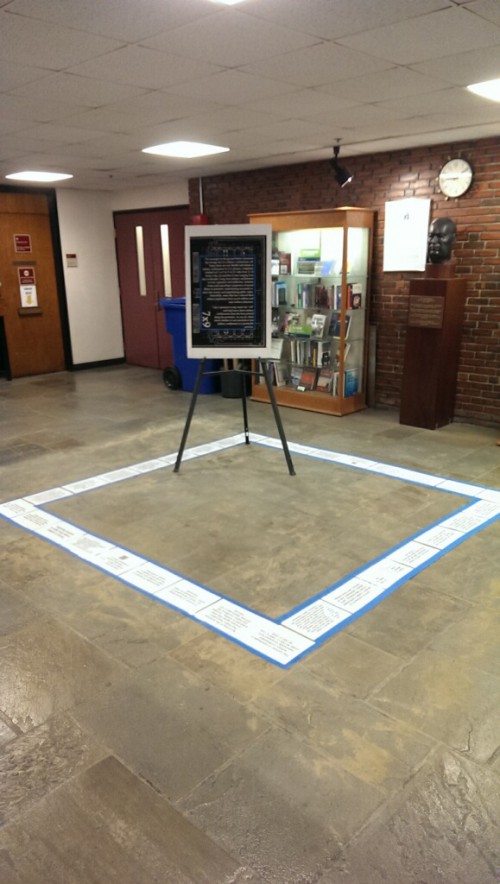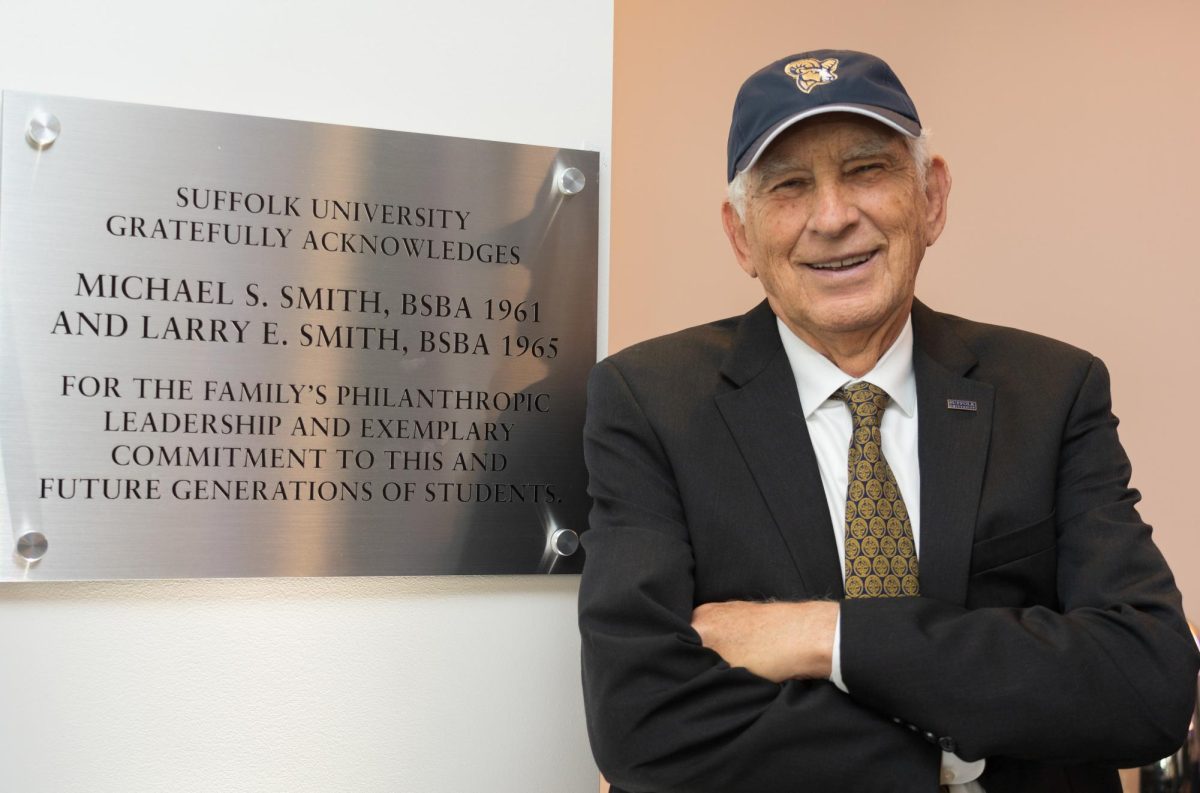One hour. That’s the amount of time given to prisoners to shower or go outside if they’re in solitary confinement. The next 23 hours are spent in a space no bigger than 7 feet by 9 feet.
Tyler Dube, a senior sociology major, organized a demonstration last Wednesday through the organization Student Alliance for Prison Reform and The Center for Community Engagement, according to a statement.
The demonstration, titled “7×9,” took place at multiple colleges in the country to motivate people to think about the practice of solitary confinement. In the Boston area, schools that participated included Harvard University, Boston University, and Brandeis University.

“It got some real attention, and it did work,” Dube said during an interview.
“It got some twitter activity,” he said, mentioning a tweet by Suffolk senior Kevin Pywell, who wrote that the demonstration was “fascinating and important, everyone should check it out.”
The demonstration was situated in an area where student traffic is high in order to get the most attention. A 7 foot by 9 foot measurement was printed on the floor, giving students a real visual of the limited space.
“Ideally, I would have had performers sit inside the cell, but I only had a week and half to organize it, so it wasn’t able to take place,” Dube said. He only joined SARP recently when its founder reached out via email due to his volunteer work with the Prison Book Project.
Dube had never participated in large scale activism, but said “I thought it was a great avenue to get involved in. Given the feedback, I’m thinking that maybe I will start a group at Suffolk.”
He explained that SARP is an intercollege group, and Suffolk doesn’t have a group yet. In order to become a full member of SARP, “the next step would be to get Suffolk to start a group on campus, and keep it going after I graduate,” Dube said.
According to the statement, “individuals in solitary confinement make up only 4 percent of the incarcerated population, they account for up to 50 percent percent of suicides that happen in incarceration facilities.”
This begs the question as to why solitary confinement is still being used in the U.S. today.
“In my experience in studying criminal justice, a lot of these practices came up during the early war on drugs,” started in the ‘70s, Dube said. “If you look at the population of prisons during this time, it skyrocketed.”
Essentially, it began as a form of protection for inside prisoners and officers from violent prisoners in solitary confinement, but it expanded to minor infractions, Dube explained. He gave an example of people of the LGBTQ population who were put in solitary for acts of gender discretion.
“Why they still use it, I’m not 100 percent sure,” he said.
The question Dube probes is, “how do we reduce harm caused by solitary?”
When it increases violence inside prison walls, it reduces the rate of prisoners having a successful reentry into general society. They can develop mental illnesses, so they are more likely to turn back to crime.
“There is no reasonable argument for solitary confinement,” Dube said.
Dube explained the goal of the demonstration is to get people to think about the confinement practice, to become aware of issues in US prison system, and “to get thought and emotion on college campuses around US.”
Suffolk students took the time to stop, read and get informed on the issue of solitary confinement, and were motivated to make a change.
“Hopefully anyone that is more interested in getting involved,” Dube said, “reaches out to me or stay tuned.”








